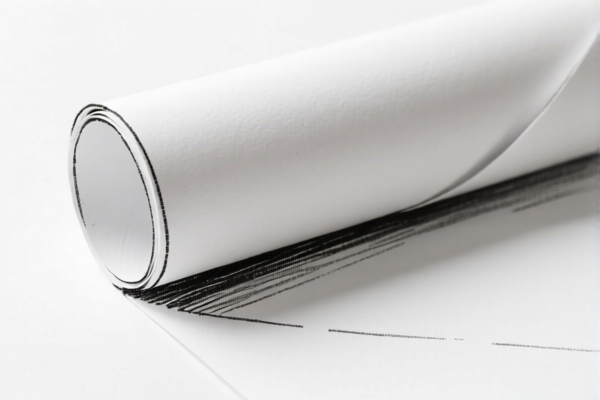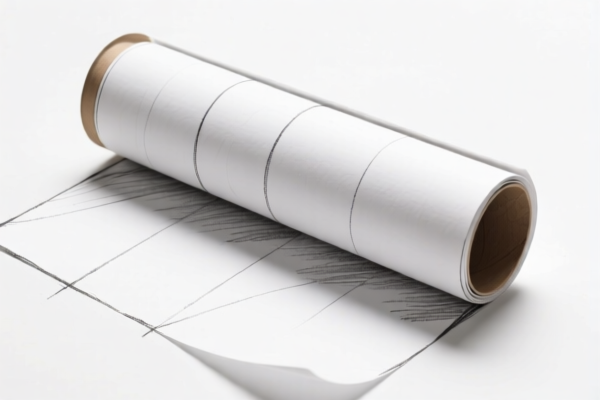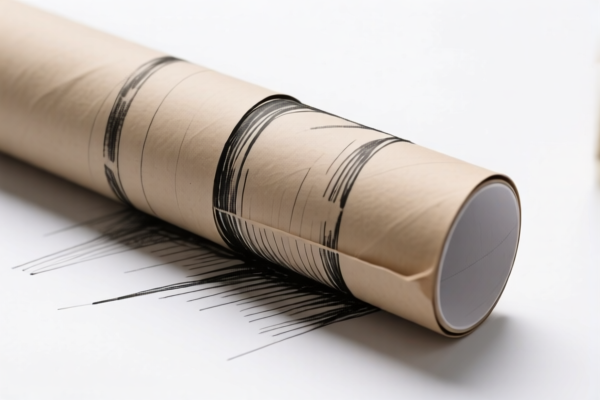| HS Code | Official Doc | Tariff Rate | Origin | Destination | Effective Date |
|---|---|---|---|---|---|
| 4805911090 | Doc | 55.0% | CN | US | 2025-05-12 |
| 4805917000 | Doc | 55.0% | CN | US | 2025-05-12 |
| 4823901000 | Doc | 55.0% | CN | US | 2025-05-12 |
| 4906000000 | Doc | 37.5% | CN | US | 2025-05-12 |
| 9701210000 | Doc | 37.5% | CN | US | 2025-05-12 |
| 9701910000 | Doc | 37.5% | CN | US | 2025-05-12 |
| 4911998000 | Doc | 37.5% | CN | US | 2025-05-12 |
| 4911996000 | Doc | 37.5% | CN | US | 2025-05-12 |




Paper Drawing Paper Roll
A paper drawing paper roll is a large, continuous sheet of paper wound onto a roll, specifically designed for artistic and technical drawing. It provides a substantial surface for creating artwork, sketches, blueprints, and other visual representations.
Material
Drawing paper rolls are typically made from wood pulp, though the specific composition varies depending on the intended use and quality. Common types include:
- Newsprint: An inexpensive option made from mechanical pulp, suitable for practice sketches and preliminary work. It is relatively thin and prone to tearing.
- Pencil/Sketch Paper: A lightweight paper with a moderate tooth (surface texture) ideal for pencil, charcoal, and pastel work.
- Tracing Paper: Semi-transparent paper used for transferring designs and creating overlays. Often made with a smoother surface.
- Layout Paper: A smooth, thin paper used for technical drawings and preliminary designs.
- Vellum: A durable, relatively smooth paper often used for technical drawings, presentations, and finished artwork.
- Watercolor Paper: Specifically formulated to withstand wet media like watercolor paints, often with a heavier weight and textured surface.
- Kraft Paper: A strong, durable paper often used for large-format drawings, packaging, and architectural plans.
Purpose
The primary purpose of a drawing paper roll is to provide a large, continuous surface for visual creation. Specific applications include:
- Artistic Drawing: Sketching, life drawing, cartooning, illustration.
- Architectural Plans: Creating blueprints, schematics, and large-format designs.
- Engineering Drawings: Technical illustrations, diagrams, and specifications.
- Design & Layout: Developing concepts, storyboarding, and creating visual presentations.
- Educational Use: Classroom activities, student projects, and large-scale collaborative drawings.
Function
Drawing paper rolls function by providing a stable, expansive surface that allows for uninterrupted drawing or design work. The roll format allows for easy advancement of the paper as needed, and the ability to create drawings of varying lengths. The paper’s surface characteristics (tooth, weight, transparency) influence the types of media that can be used effectively.
Usage Scenarios
- Art Studios: Providing a large format for artists to work on murals, large-scale sketches, and collaborative projects.
- Architectural Firms: Creating and reviewing blueprints and construction plans.
- Engineering Departments: Developing technical drawings and schematics.
- Design Schools: Facilitating student projects and large-format design exercises.
- Home Studios: Providing a convenient surface for hobbyists and artists.
- Outdoor Sketching: Portable rolls allow for on-location drawing and sketching.
Common Types (by weight/application)
- Lightweight (50-70gsm): Newsprint, tracing paper – for practice, preliminary sketches, and transferring designs.
- Medium Weight (80-120gsm): Sketch paper, layout paper – for general drawing, pencil, charcoal, and light watercolor washes.
- Heavy Weight (140gsm+): Watercolor paper, vellum – for wet media, finished artwork, and durable technical drawings.
- Roll Widths: Vary widely, from narrow rolls (e.g., 18 inches) for portable sketching to very wide rolls (e.g., 36 inches or larger) for architectural plans.
- Roll Lengths: Commonly available in lengths of 25, 50, 75, or 100 feet.
Based on the provided information, “paper drawing paper roll” can be classified under the following HS codes:
- 4805911090: This HS code covers “Other uncoated paper and paperboard, in rolls or sheets, not further worked or processed than as specified in note 3 to this chapter: Other: Weighing
150 g/m² or less: Multi-ply paper and paperboard; bibulous and wrapping paper Other”. This could apply if the drawing paper is uncoated, in roll form, weighs 150 g/m² or less, and is a multi-ply paper. The total tax rate is 55.0%, comprising a base tariff of 0.0% and an additional tariff of 25.0%, increasing to 30.0% after April 2, 2025. - 4805917000: This HS code covers “Other uncoated paper and paperboard, in rolls or sheets, not further worked or processed than as specified in note 3 to this chapter: Other: Weighing
150 g/m² or less: Other: Weighing over15 g/m² but not over30 g/m² ”. This applies if the drawing paper is uncoated, in roll form, weighs over 15 g/m² but not over 30 g/m². The total tax rate is 55.0%, comprising a base tariff of 0.0% and an additional tariff of 25.0%, increasing to 30.0% after April 2, 2025. - 4906000000: This HS code covers “Plans and drawings for architectural, engineering, industrial, commercial, topographical or similar purposes, being originals drawn by hand; handwritten texts; photographic reproductions on sensitized paper and carbon copies of the foregoing”. If the paper roll consists of original drawings created by hand, this HS code may be applicable. The total tax rate is 37.5%, comprising a base tariff of 0.0% and an additional tariff of 7.5%, increasing to 30.0% after April 2, 2025.
- 4911998000: This HS code covers “Other printed matter, including printed pictures and photographs: Other: Other: Other: Other”. If the paper roll contains printed drawings or pictures, this HS code may be applicable. The total tax rate is 37.5%, comprising a base tariff of 0.0% and an additional tariff of 7.5%, increasing to 30.0% after April 2, 2025.
Chapter 48: Covers paper and paperboard. Chapter 49: Covers printed matter, including plans and drawings.
Note: The applicable HS code depends on the specific characteristics of the “paper drawing paper roll”, including whether it is coated, its weight, whether it contains printed matter, and whether it consists of original hand-drawn drawings.
Customer Reviews
No reviews yet.